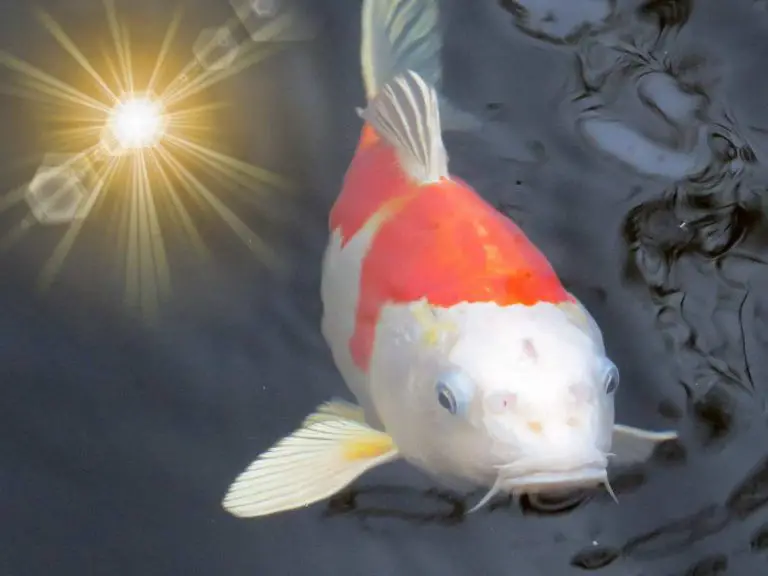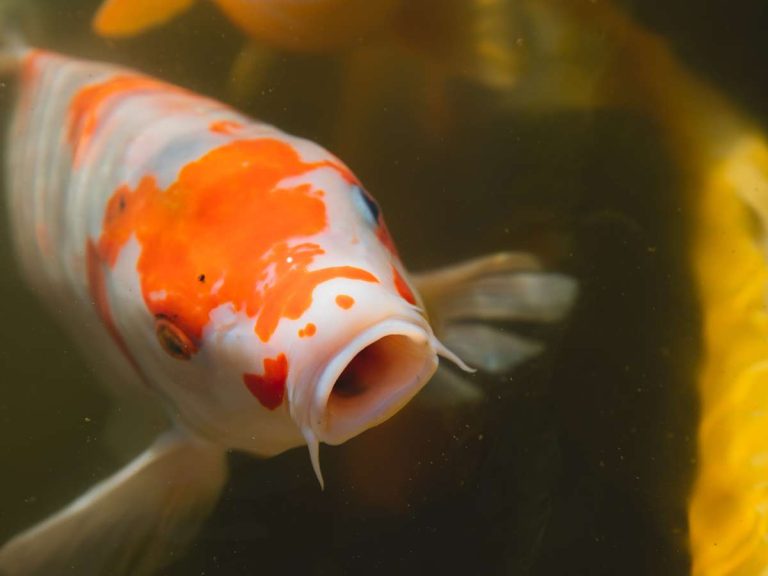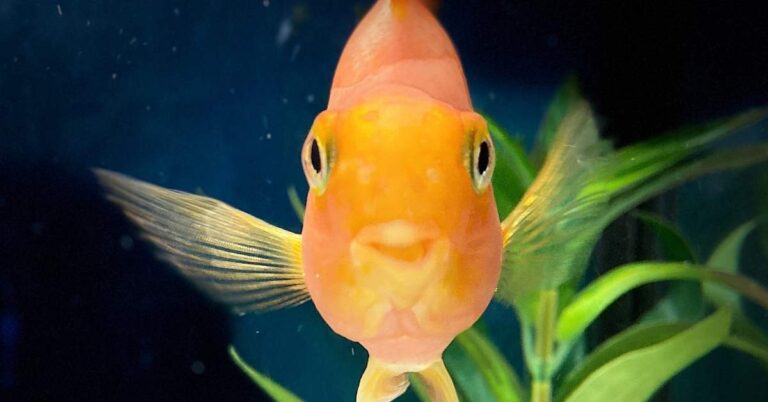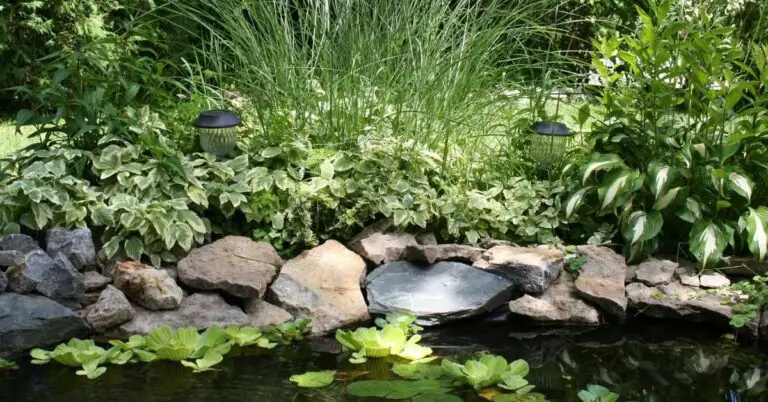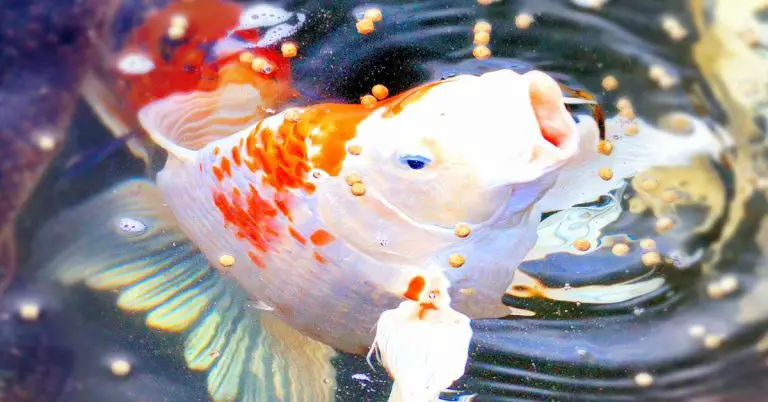How to Heat Your Koi Pond All Year Long: Techniques for Optimal Fish Health
Unless you live in the hottest climates, then you need to know how to heat your koi pond. Between chilly evenings and unexpected cold snaps, you never know when your fish might too cold, no matter what the season.
We deciding how and when to heat your koi pond, there are a few factors to consider. The size and depth of your pond, along with your water volume and circulation all affect how heat will be distributed. Of course, you also need to take into account the climate and seasonal changes in your area, ensuring your koi pond stays warm even during colder months.
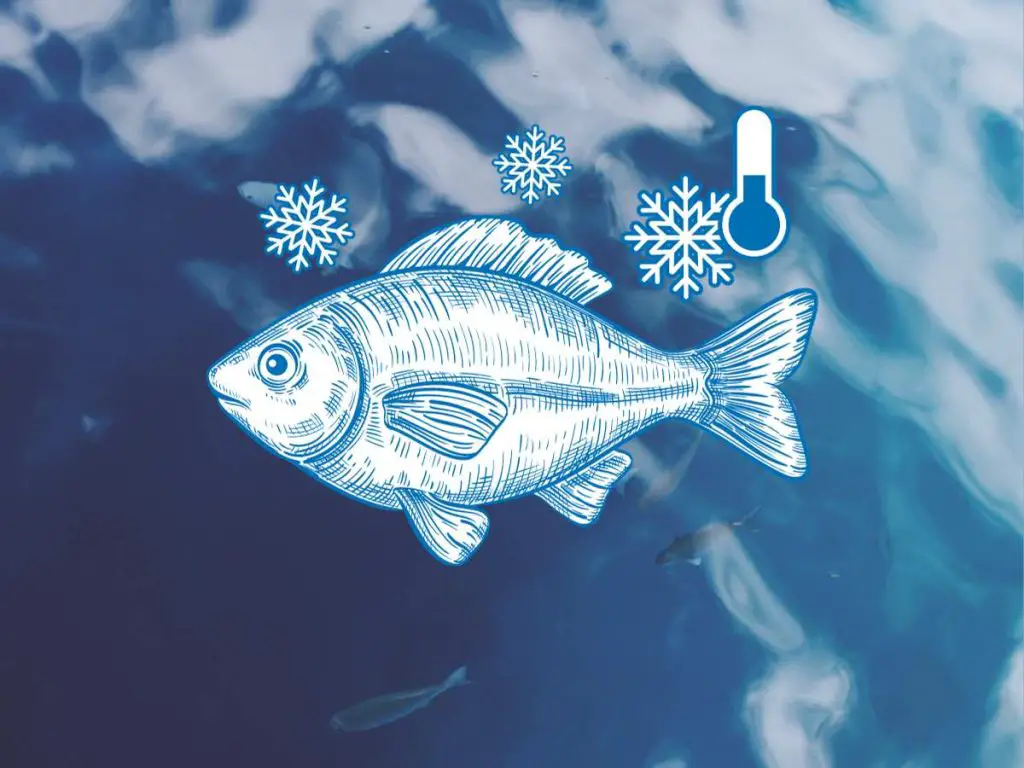
If you’re wondering how to heat your koi pond, you’ve come to the right place! This article is full of tips and techniques to help you create the perfect environment for your beloved koi fish.
Keep reading to discover the best practices for heating your koi pond and how to maintain a comfortable and safe environment for your fish.
Factors to consider when heating a koi pond
The size and depth of your koi pond are important factors to consider when it comes to heating. A larger pond may require more powerful heating equipment, while a smaller pond may need a more compact heating solution. Additionally, the depth of the pond will affect how efficiently the heat is distributed throughout the water.
Another factor to consider is the climate and seasonal changes in your area. If you live in a region with extreme temperatures, you may need to invest in a more robust heating system to ensure your koi fish stay comfortable year-round. Seasonal changes can also impact the water temperature in your pond, so it’s important to monitor these changes and adjust your heating accordingly.
Finally, the water volume and circulation in your koi pond also play a role in heating. A larger volume of water will take longer to heat up, so you may need a more powerful heating option. Additionally, proper water circulation is crucial for distributing heat evenly throughout the pond and preventing stagnant areas where the water may become too hot or too cold.
What temperature is too cold for a koi pond?
Maintaining the right water temperature is crucial for the health and well-being of koi fish.
Koi are cold-water fish, but they thrive best in water temperatures between 59-77 degrees Fahrenheit. As the water temperature starts to drop, it can have significant effects on the koi’s immune system and overall health.
When the water temperature drops to 15°C (59°F), a koi’s immune system begins to slow down. By the time it reaches 10°C (50°F), their immune system operates at only 10% efficiency. However, both beneficial and harmful pond bacteria, such as Aeromonas, still function at around 60% efficiency. This imbalance puts your koi at risk, especially in a temperature range often referred to as “Aeromonas Alley.” If the water quality is subpar, this is the temperature range where fish health issues might arise.
It’s essential to stop feeding your koi when the temperature hits 10°C, even if they seem hungry. The absolute lowest temperature koi can comfortably survive in is 4°C (39.2°F). Any colder than this, especially temperatures dropping to 1°C (33.8°F), can be fatal to your fish. Weaker koi might develop internal issues from which they might never recover.
Moreover, koi that have been in a torpid or dormant state at low temperatures might exhibit behaviors like rubbing their undersides on the pond bottom. This can lead to skin lesions and ulcers. While heating your pond in winter is an optimal solution, it’s not strictly necessary if you take certain precautions. These include turning off fountains and waterfalls, keeping filters running, and aerating the pond at a reduced rate. If the pond’s depth is less than 4 feet, covering it becomes essential to protect the fish from extreme cold.
Ultimately, while koi are resilient and can tolerate cold temperatures to some extent, it’s vital to monitor water temperatures and take preventive measures if things get too cold. Ensuring the right temperature range not only keeps your koi healthy but also allows them to thrive and showcase their vibrant colors and patterns.
Equipment and heating options for koi ponds
Maintaining the right temperature for your koi pond is crucial for the health and well-being of the fish. The right equipment ensures a stable environment, promoting growth and reducing the risk of diseases. Let’s delve into the various heating options available for koi ponds:
Pond Heaters: These are among the most effective ways to heat a koi pond. Designed for rapid heating and consistent temperature maintenance, most pond heaters are electric. The size of your pond dictates the heater size you’ll need. For optimal heat distribution, place the heater in the pond’s deepest part.
Heat Pumps: Heat pumps transfer heat from the surrounding air to the pond water. They’re suitable for moderate to warm climates but might not be the best choice for colder regions. Ensure the pump’s compatibility with your pond’s size and flow rate. Additionally, they might need extra space for installation and proper ventilation.
Floating Deicers: Ideal for colder climates, floating deicers keep a small section of the pond unfrozen, ensuring gas exchange and oxygenation. They’re energy-efficient and come in various sizes to suit different pond dimensions.
Submersible Heaters: These heaters are perfect for smaller koi ponds and water gardens, offering targeted heating. With adjustable temperature controls, they’re best positioned near the water’s flow source for effective heat distribution.
Solar Heating Options: For those leaning towards eco-friendly solutions, solar water heaters are an excellent choice. Harnessing the sun’s energy, they’re especially effective in sunny regions and can heat large water volumes, leading to energy cost savings.
Geothermal Solutions: Tapping into the earth’s natural heat, geothermal systems use a closed-loop system to heat the pond. While the initial installation might be on the pricier side, they offer substantial energy savings in the long run. They’re best suited for larger ponds in moderate climates with a continuous water flow.
| Heating Option | Pros | Cons |
|---|---|---|
| Solar Heating | – Environmentally friendly – No operational costs once installed – Can be efficient in sunny climates | – Initial setup can be expensive – Not effective during cloudy days or nighttime – May not provide consistent temperatures |
| Electric Inline Heaters | – Provides consistent temperatures – Can be used year-round – Suitable for larger ponds | – Can be expensive to run – Requires electricity source – Potential risk of electrical issues |
| Gas Heaters | – Can heat water quickly – Suitable for larger ponds – Can be used year-round | – Requires gas source – Can be expensive to run – Potential carbon monoxide risk if not properly ventilated |
| Heat Pumps | – Energy efficient – Can both heat and cool the pond – Suitable for various pond sizes | – Initial setup can be expensive – Requires electricity source – May not be as fast as gas heaters |
4 Best practices for heating a koi pond
Keeping your koi pond at the right temperature is crucial for the health and well-being of your fish.
Here are some best practices to consider.
1. Determine the right temperature range
Before you start heating your pond, it’s important to determine the ideal temperature range for your koi. Generally, koi thrive in water temperatures between 70°F and 75°F (21°C and 24°C). However, different koi varieties may have slightly different temperature preferences, so it’s always a good idea to research the specific needs of your fish.
2. Monitor water temperature
Investing in a reliable thermometer is essential for keeping track of the water temperature in your pond. Regular temperature checks will help you ensure that the water remains within the desired range. You can find a variety of pond thermometers on the market, ranging from floating thermometers to digital ones that can be mounted on the pond wall.
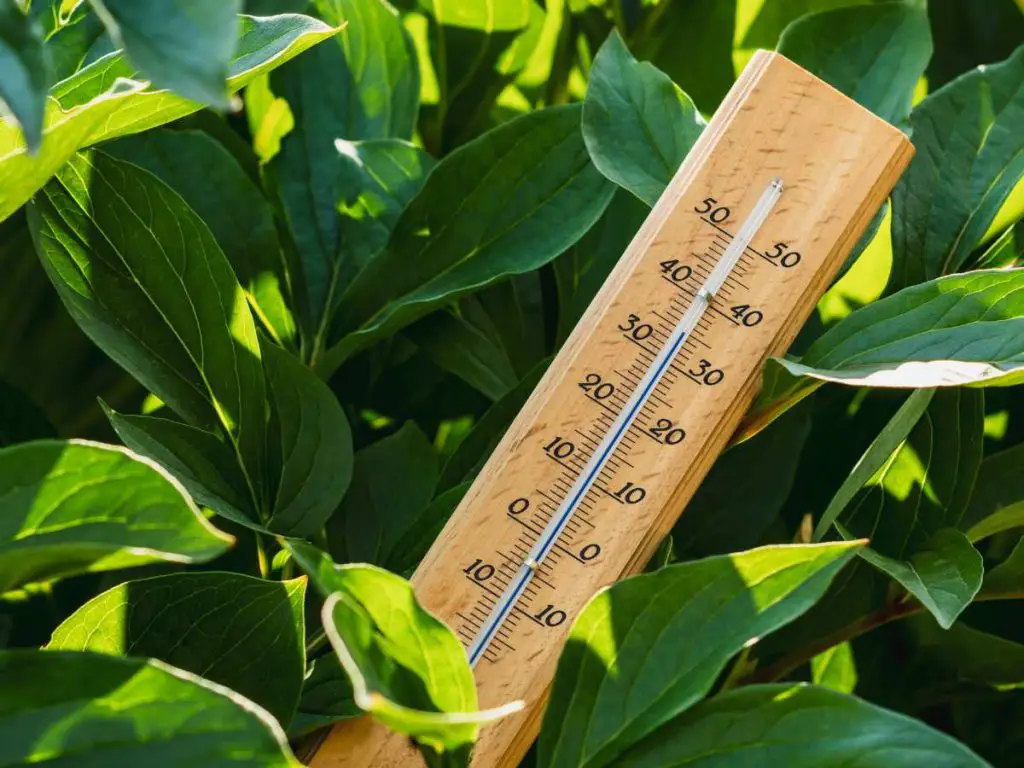
3. Insulate the pond
To help retain heat in your koi pond, consider insulating it. This can be done by using insulating materials such as pond liner underlay, which will help prevent heat loss from the bottom of the pond. Additionally, you can use foam boards or insulation blankets around the sides of the pond to further reduce heat loss.
4. Use a cover or shelter
Another way to minimize heat loss and protect your koi pond is by using a cover or shelter. A pond cover or shelter will help reduce heat loss caused by evaporation and protect the pond from cold winds. You can use materials such as netting, plastic, or even a custom-built shelter to cover your pond during colder months.
Supplemental heat sources for koi ponds
If you want to give your koi pond some extra warmth, consider adding heat-retaining materials to the bottom. Rocks, gravel, or even black rubber liners can absorb heat during the day and release it at night, providing some insulation for your fishy friends.
Another option is to use heat lamps or heating elements specifically designed for ponds. These can be placed strategically around the pond to radiate heat and keep the water temperature stable. Just be sure to follow the manufacturer’s instructions and keep an eye on the temperature to avoid overheating the pond.
Or, for more long-term and efficient heating, you might consider installing underground heat sources. This can be done through the use of geothermal heating systems or burying pipes that circulate warm water underground. These methods take advantage of the earth’s natural heat and can provide consistent warmth for your koi pond.
Maintaining water quality while heating a koi pond
Maintaining proper water quality while heating a koi pond is not just about ensuring the comfort of the fish but is pivotal for their overall health and longevity. Koi fish, like all aquatic creatures, thrive in a stable environment where the water parameters are consistent. Fluctuations in water quality, especially when heating the pond, can lead to stress, making koi more susceptible to diseases. Moreover, the metabolic rate of koi increases with the water temperature. As the metabolism accelerates, so does their need for oxygen and their production of waste. Without proper water quality, the pond can quickly become a breeding ground for harmful bacteria and pathogens, which can adversely affect the koi’s health.
In short, while heating provides the necessary warmth koi need, especially in colder climates, it’s imperative to balance this with optimal water quality to ensure a thriving ecosystem for the fish.
Oxygenation and aeration
Proper oxygenation and aeration are crucial in a heated koi pond. Warmer water holds less oxygen, so it’s important to provide adequate oxygen levels for your fish. Consider installing a quality pond aerator or fountain to maintain oxygen levels and promote water circulation. This will help prevent issues like fish suffocation or the growth of harmful bacteria.
Regular water testing
Regular water testing is essential when heating a koi pond. Heating can affect water chemistry, so it’s important to monitor parameters such as pH, ammonia, nitrite, and nitrate levels. Use a reliable water testing kit to ensure that these parameters are within the appropriate range for your koi fish. If you notice any significant changes, take immediate action to address the issue and restore balance to the pond environment.
Maintaining proper filtration
Proper filtration is crucial in maintaining water quality in a heated koi pond. The increased temperature can accelerate the growth of algae and bacteria, so a robust filtration system is essential. Make sure your filtration system is appropriately sized for the volume of your pond and regularly clean and maintain the filters to ensure optimal efficiency. A good filtration system will help remove excess waste, debris, and harmful substances, keeping the water clean and healthy for your koi fish.

Cold climate considerations for heating a koi pond
When it comes to heating a koi pond in cold climates, winterizing becomes essential. You’ll want to take steps to protect your fish, equipment, and overall pond environment from the harsh winter conditions.
Related Complete Guide: How To Winterize Your Koi Pond and Heat It During Fall and Winter
Keep your fish happy, healthy, and the right temperature
So, there you have it – a comprehensive guide on heating a koi pond for optimal fish health. By considering factors such as the size and depth of your pond, the climate and seasonal changes, as well as the water volume and circulation, you can make informed decisions on the best heating options for your specific pond.
In terms of equipment, pond heaters, heat pumps, floating deicers, submersible heaters, solar heating options, and geothermal solutions are all viable choices to heat your koi pond. And don’t forget about supplemental heat sources such as heat-retaining materials, heat lamps or heating elements, and underground heat sources.
However, it’s not just about heating the pond. You also need to maintain water quality and ensure proper oxygenation and aeration, as well as conduct regular water testing and maintain proper filtration.
If you live in a cold climate, it’s important to take extra precautions by winterizing the pond, implementing extra insulation techniques, and adjusting the winter feeding schedule accordingly.
All in all, providing a suitable environment for your koi fish through proper heating techniques is crucial for their overall health and well-being. By following the tips and techniques outlined in this article, you can ensure that your koi pond remains a thriving and comfortable habitat for your beloved fish.
Related Questions
Can I use a regular space heater to heat my koi pond?
It is not recommended to use a regular space heater to heat a koi pond. Space heaters are designed for indoor use and may not be suitable for outdoor environments. Additionally, they may not provide the proper heating capacity needed for a pond of the size and volume required for koi fish. It is best to invest in specialized pond heating equipment designed specifically for koi ponds.
Does heating a koi pond require a lot of electricity?
The amount of electricity required to heat a koi pond will depend on various factors, such as the size of the pond, the desired temperature range, and the heating equipment being used. While heating a pond may require some electricity, it can be managed efficiently by using energy-efficient heating options, proper insulation, and by monitoring and adjusting the temperature as needed. It is a good idea to research and compare the energy consumption of different heating options before making a decision.

